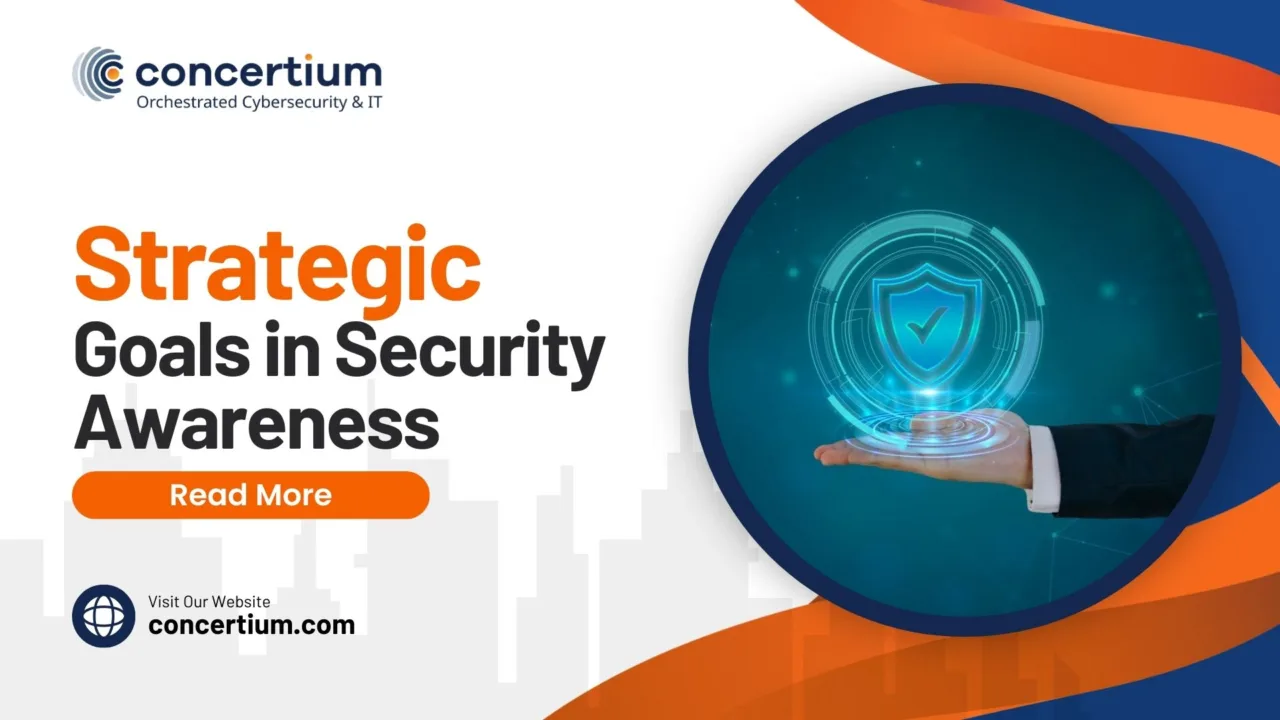Strategic Goals in Security Awareness Programs
Implementing a cybersecurity awareness program requires the involvement of every department within a company and the backing of all levels of management. Clear strategic goals are crucial to steer the program and ensure it remains aligned with its objectives.
Asking, “Why are you deploying a security awareness program?” is a vital question to clarify your strategic goals. While the answer may not be straightforward, this step is essential as it helps establish a clear direction and identify the relevant metrics and KPIs to track.
Let’s examine the three goal categories in an information security awareness program, provide examples, and discuss their significance:
Why security awareness program goals are important
The importance of establishing goals for a security awareness program cannot be overstated. Strategic goals define what you aim to achieve and provide a collaborative framework for your team to follow. Without this guidance, your cyber security program can become nebulous and challenging, leading to disorganization in its early stages.
Identifying goals allows you to create a detailed plan outlining all the necessary steps to achieve them. This, in turn, helps you determine key metrics and the appropriate curriculum needed to support the success of the cyber security awareness training campaign.
Moreover, executive support is crucial for promoting adoption and engagement. When employees see company leaders and their direct managers actively participating in the cyber security training, they are much more likely to take the program seriously.
Clearly defined goals make it easier for executives to endorse your security awareness training initiative and integrate it into the company-wide information security program. This support is essential for fostering a culture of compliance and security throughout the organization.
Goal Categories
To be effective, your strategic goals must be concrete, tangible, and aligned with organizational priorities. They should be easy to understand yet broad enough to translate into KPIs, metrics, and activities that will drive their accomplishment.
For cyber security awareness programs, strategic goals should be broken down into the following categories:
Risks and Behaviors
Modern security threats often exploit human errors and evolve rapidly to circumvent organizational defenses. While reducing risk potential is a valid goal, it must be coupled with behavior modification to ensure users do not repeat unsafe actions as cyber threats adapt. This approach involves conducting a thorough risk assessment and prioritizing actions that address both existing and emerging threats.
Security Mindset
The best way to ensure that your workforce takes cyber security awareness seriously is to embed it within your work culture. By having managers act as cyber security ambassadors, training on this subject becomes second nature. Employees will understand the significance of the program, fostering an environment where effective security practices are a priority.
Compliance Obligations
In today’s digital business world, nearly every industry faces cyber security compliance obligations. Whether legal or contractual, these obligations can significantly impact business operations if not met. A robust security strategy must include meeting these requirements to avoid legal penalties and protect the organization’s reputation.
By setting goals in these categories, you can create a comprehensive and effective security awareness program that aligns with your organization’s current security needs and priorities.
Examples of Strategic Goals and How to Track Them
To ensure your security awareness program comprehensively addresses cyber security within your organization, it’s important to establish specific goals for each category. Here are examples for the outlined categories:
Diminish Enterprise Risks from Cyber Security Threats through Knowledge
This goal focuses on empowering and motivating employees to enhance their cyber security behaviors and actions. Employees often view phishing and other cyber threats as potential pitfalls that could lead to trouble or even termination. By shifting their mindset from reactive to proactive, you can help employees understand the importance of cyber security and equip them with the tools and knowledge to integrate it into their daily routines.
How to Track This Goal: Track progress by monitoring the deployment of program activities:
- Are training sessions conducted to educate employees on cyber risks and the importance of security in their daily work?
- Is there leadership commitment to the program?
- Does the program address key risks and threats?
- Is there a defined plan that includes training, simulations, and reinforcement activities?
- What is the frequency, duration, and deployment schedule of these activities, and is management adhering to it?
- Are acceptable use policies and procedures in place and communicated to employees?
- Does the organization have an ambassador program to promote awareness activities?
- Are regular assessments performed to evaluate the program’s effectiveness, and is it optimized based on performance?
Enable Employees to Make Safe Cyber Security Decisions Daily
This goal aims to equip employees with the knowledge to act confidently when faced with potential cyber security issues. Achieving this goal requires creating a cyber-aware culture and providing a supportive framework for employees. This helps them see cyber security training not as a chore but as an opportunity to gain valuable skills for safer and more efficient work.
How to Track This Goal: Track progress by collecting data on employee knowledge, behaviors, attitudes, and actions:
- Knowledge Questionnaires: Conduct anonymous quizzes to assess current knowledge, prioritize topics, measure knowledge retention, and identify high-risk areas.
- Feedback Surveys: Distribute anonymous surveys to gather feedback on program content, relevance, reach, and opportunities for improvement.
- Phishing Simulations: Use simulations as learning and evaluation tools to identify risky behaviors and track positive actions like reporting suspicious messages. Initial simulations can establish a baseline for subsequent training.
- Interviews: Discuss awareness program aspects with department leads, including objectives, concerns, past issues, and participation capacity. Prepare questions, select participants, and coordinate meetings.
- System Monitoring: Audit data from systems such as firewalls, internet proxies, email gateways, and user behavior analytics. Review service desk tickets for cyber incidents to track the adoption of secure practices.
By setting these strategic goals and implementing robust tracking methods, you can ensure your security awareness program effectively enhances your organization’s cyber security posture.
Minimize Corporate Liability, Risks, and Costs Arising from Non-Compliance
Depending on your industry, this goal could be the most crucial and impactful to implement. Compliance can also serve as an internal motivator to strengthen your own cyber security goals.
How to Track This Goal: Track this goal in conjunction with the “Diminish Enterprise Risks” example:
- External Industry Obligations: Does the program include activities related to applicable external industry obligations, such as those in privacy, health, energy, finance, etc.? If so, what are they?
- Personal data protection requirements
- Cyber threats targeting sensitive information in each sector
- Procedures for handling personal data according to established guidelines
- Contractual obligations
- Industry-specific standards
- Frequency of Training: How often are these topics covered in training sessions?
- Participation Rate: What percentage of employees participate in these training sessions?
- Understanding and Tracking: Have employees comprehended the requirements well? How does the organization track this understanding?
- Training sessions
- Q&A sessions
- Dedicated contact for inquiries
- Government Requirements: For the public sector, are there any specific government requirements that need to be addressed?
Optimizing Your Program
Well-defined goals provide an excellent opportunity to tweak and optimize your program as it is rolled out. These goals act as benchmarks for assessing success and can be easily modified or adjusted along the way.
Conclusion
In conclusion, establishing clear strategic goals for your cyber security awareness program is essential for its success. These goals should address risks and behaviors, foster a security mindset, and ensure compliance with industry obligations.
By doing so, you can create a comprehensive and effective security strategy that mitigates risks, promotes proactive security behaviors, and meets regulatory requirements.
Tracking these goals through defined metrics and regular assessments allows for continuous optimization of the program. With strong leadership support and a collaborative approach, your organization can build a robust information security program that enhances overall cyber security and reduces liabilities and costs associated with non-compliance.





